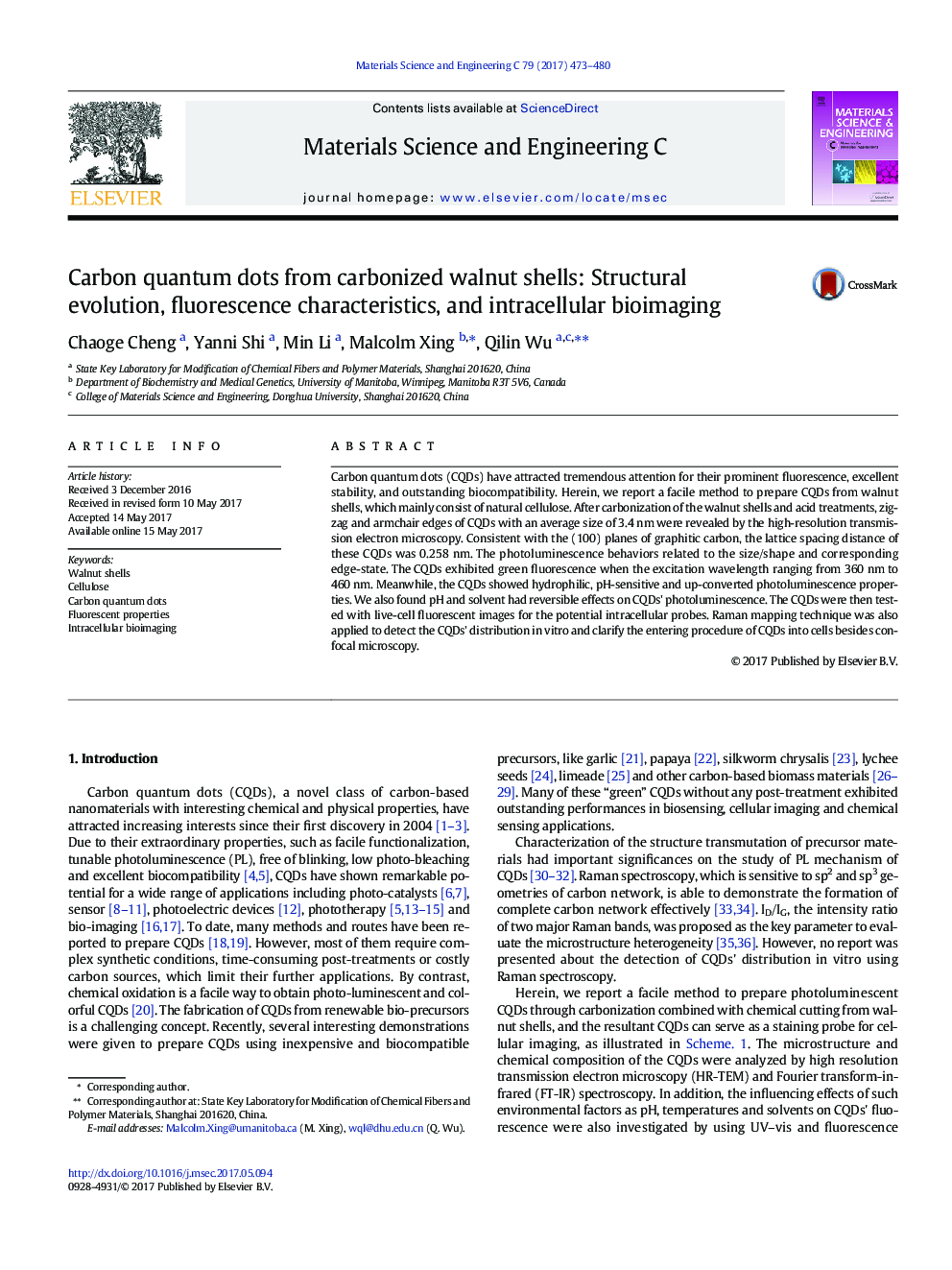| Article ID | Journal | Published Year | Pages | File Type |
|---|---|---|---|---|
| 5434751 | Materials Science and Engineering: C | 2017 | 8 Pages |
â¢Green photoluminescent CQDs were prepared from bio-precursor walnut shells.â¢Solvents had reversible effects on CQDs' photoluminescence.â¢Raman mapping technique was firstly applied to detect CQDs' distribution in vitro.
Carbon quantum dots (CQDs) have attracted tremendous attention for their prominent fluorescence, excellent stability, and outstanding biocompatibility. Herein, we report a facile method to prepare CQDs from walnut shells, which mainly consist of natural cellulose. After carbonization of the walnut shells and acid treatments, zigzag and armchair edges of CQDs with an average size of 3.4Â nm were revealed by the high-resolution transmission electron microscopy. Consistent with the (100) planes of graphitic carbon, the lattice spacing distance of these CQDs was 0.258Â nm. The photoluminescence behaviors related to the size/shape and corresponding edge-state. The CQDs exhibited green fluorescence when the excitation wavelength ranging from 360Â nm to 460Â nm. Meanwhile, the CQDs showed hydrophilic, pH-sensitive and up-converted photoluminescence properties. We also found pH and solvent had reversible effects on CQDs' photoluminescence. The CQDs were then tested with live-cell fluorescent images for the potential intracellular probes. Raman mapping technique was also applied to detect the CQDs' distribution in vitro and clarify the entering procedure of CQDs into cells besides confocal microscopy.
